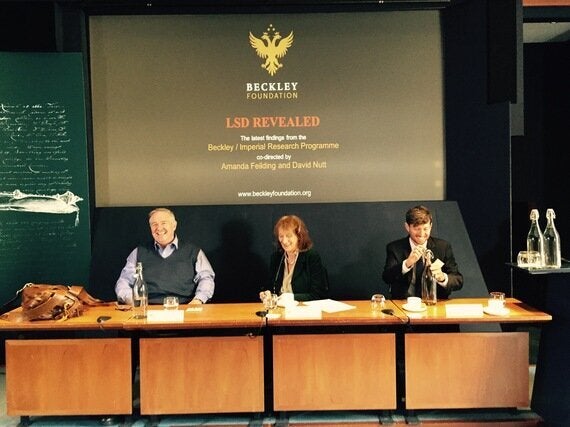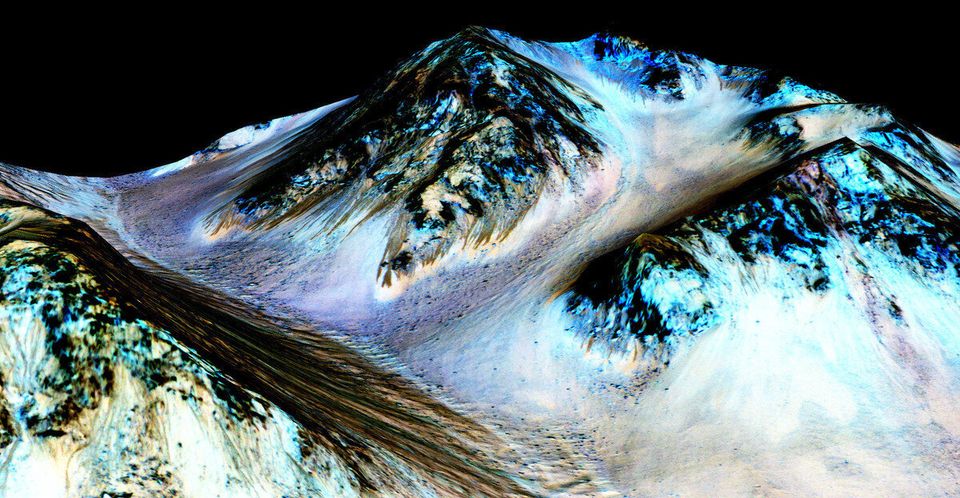The Beckley/Imperial Research Programme has just had the results of the first ever brain imaging study published in the Proceedings of the National Academy of Sciences. The findings are being launched at the Royal Society on Wednesday 13 April. Below is an extract from Amanda Feilding's talk for the event.
I think Albert Hofman would have been delighted to have his "Problem child" celebrated at the Royal Society, as in his long lifetime the academic establishment never recognised his great contribution. But for the taboo surrounding this field, he would surely have won the Nobel Prize. That was the beginning of the modern psychedelic age, which has fundamentally changed society.

From left, David Nutt, Amanda Feilding & Robin Carhart-Harris
After the discovery of the effects of LSD, there was a burst of excitement in the medical and therapeutic worlds - over 1000 experimental and clinical studies were undertaken. Then, in the early 60s, LSD escaped from the labs and began to spread into the world at large. Fuelled by its transformational insights, a cultural evolution took place, whose effects are still felt today. It sparked a wave of interest in Eastern mysticism, healthy living, nurturing the environment, individual freedoms and new music and art among many other changes. Then the establishment panicked and turned to prohibition, partly motivated by American youth becoming disenchanted with fighting a war in far-off Vietnam.
Aghast at the global devastation caused by the war on drugs, I set up the Beckley Foundation in 1998. With the advent of brain imaging technology, I realised that one could correlate the subjective experience of altered states of consciousness, brought about by psychedelic substances, with empirical findings. I realised that only through the very best science investigating how psychedelics work in the brain could one overcome the misplaced taboo which had transformed them from the food of the gods to the work of the devil.
My aim was, and is, to re-integrate these valuable substances into the fabric of society, and make their benefits available where appropriate. Over the years I have started many programmes of collaboration around the world. My partnership with Dave Nutt has been particularly rewarding. It began in 2005 with a brain imaging study into the effects of cannabis. In 2009, when Dave moved to Imperial College we started the Beckley/Imperial Research Programme, with a study using psilocybin. We got the approval because unlike LSD, few recognise the name.
In 2014, we finally got approval for an LSD study, something I had been aiming to do for many decades. The results of the study are very revealing. Importantly, we found increased communication between different regions of the brain that don't normally communicate. The findings of our research have prompted the so called entropic brain theory - where entropy refers to chaotic or erratic activity. We have shown that psychedelics increase the entropy of the brain to generate a more disordered fluid state of consciousness. As this state is more flexible and less rigid, it makes people more open to new concepts and ideas. This may lead to the breaking of rigid thought patterns such as those found in depression, addiction, and obsessive-compulsive disorder.
Our results have implications for the neurobiology of consciousness and for potential applications of psychedelics in psychological research as well as the treatment of mental health problems. Our pilot psilocybin for depression study is already providing remarkable results, where after only 2 treatment sessions patients with severe, treatment-resistant depression, experience rapid and enduring reductions in their symptoms. We hypothesise that change in network connectivity brought about by psychedelics has a causal role in their beneficial effects.
Hopefully, as our and other research groups' investigations progress, the world will slowly begin to understand that these incredible substances which interact so intimately with the neurochemistry of the human system, can be used as tools to heal our ailments, enhance our enlightenment, expand our vision, increase our compassion and wise management of society and the environment.
We need to recognise that the changing of conscious states can be an enhancement and that just as the freedom of conscience, religion and the right to develop the personality is a recognised human right, so too should be the freedom of consciousness, so long as the individual does not harm others.
It seems amazing that something so totally personal as ones level of consciousness could be considered an illegal act. But there is a turning of the tide both in policy and in scientific research, which has begun to recognise the value of these substances.
Our studies have begun to lay bare the workings underlying the changing states of consciousness. With a better understanding of the mechanisms underlying these states we can learn to use them better, to manipulate our consciousness, to our own and societies advantage. William James explains it like seeing through the veils of perception. Huxley describes the ego as a reducing valve of the brain. How right they were. Now, for the first time we have seen the empirical basis of these realisations.
